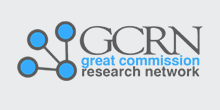Author ORCID
Keywords
Quantitative research, Statistics, Church
Abstract
Although the proper use of statistics is challenging for most people, including researchers, aggregated numeric data is often the strongest evidence that a researcher can present to support an idea. This is because statistics is such a powerful tool for detecting trends that can be observed in complex contexts such as churches. Church researchers need to understand two classes of statistics: descriptive statistics and inferential statistics. Descriptive statistics describe the different variables that are measured in a study and include the mean, the standard deviation, and confidence intervals. They also include correlations showing how these variables are related to each other. Inferential statistics, in contrast, are calculated to test a hypothesis and to make an inference of whether any trends observed in a sample can be expected to be true for the population from which data was collected. If the statistical evidence is so strong that we can make inferences about the population, we say that the statistics are significant. In church-based research, statistics can be used to describe people and the phenomena associated with them (such as thoughts, feelings, and behaviors), allowing us to make inferences about how they are related. From an objective point of view, these inferences are much more credible than reported personal experiences or anecdotes.
Recommended Citation
Dunaetz, D. R. (2024). Using Statistics in Church-Based Research. Great Commission Research Journal, 16(2), 5-18. Retrieved from https://place.asburyseminary.edu/gcrj/vol16/iss2/1
Included in
Christianity Commons, Practical Theology Commons, Religious Thought, Theology and Philosophy of Religion Commons

